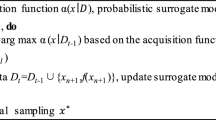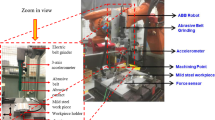Abstract
This study uses machine learning algorithms and the Adaptive Neuro-Fuzzy Inference System (ANFIS) to predict welding strength in DD13 sheet metal joints with AISI 1010 nuts. The objective is to optimize industrial welding processes and improve quality control. The study investigates weld current, time, and hold time as critical input variables for joint integrity. The performance of different ML algorithms, including linear regression, random forest regression, ridge regression, Bayesian regression, K-Nearest Neighbors regression, decision tree regression, and ANFIS, are evaluated. Training and testing data consist of welding parameters and corresponding strength measurements. Performance metrics such as R2 score, mean absolute error (MAE), mean squared error (MSE), and root mean square error (RMSE) are used to assess the predictive capabilities. Random forest regression is the most efficient algorithm, with a high R2 score of 0.992 and minimal errors. ANFIS also exhibits comparable performance, highlighting its efficacy in this context. These findings can be useful for optimizing welding parameters in industrial settings, potentially leading to improved quality control and weld strength, particularly in automotive applications. Using ML and ANFIS, industries can make informed decisions to optimize welding processes and ensure joint integrity, ultimately meeting the rigorous demands of demanding applications.











Similar content being viewed by others
References
Larsson, J. K., Bengtsson, L.: The overlooked joining technology of fasteners for modern car body structures–latest experience from nut and bolt attachment to advanced high strength steels. In: 11th European Automotive Engineers’ Council (EAEC). Budapest, Hungary (2007)
Nielsen, C.V., Zhang, W., Martins, P.A.F., Bay, N.: 3D Numerical simulation of projection welding of square nuts to sheets. J. Mater. Process. Technol. 215, 171–180 (2015). https://doi.org/10.1016/j.jmatprotec.2014.08.017
Wang, X., Zhang, Y.: Effects of welding procedures on resistance projection welding of nuts to sheets. ISIJ Int. 57(12), 2194–2200 (2017)
Nielsen, C.V., Zhang, W., Martins, P.A.F., Bay, N.: Numerical and experimental analysis of resistance projection welding of square nuts to sheets. Procedia Eng. 81, 2141–2146 (2014)
Gahlot, P., Hooda, N., Gupta, S., Phanden, R.K.: Microstructural assessment of friction stir joined AA6063/10.5% Sic al-matrix composite. Mater. Today Proc. 78, 662–666 (2023)
Huang, H.-Y., Tseng, K.-H.: Process parameters in resistance projection welding for optical transmission device package. J. Mater. Eng. Perform. 20, 244–249 (2011)
Ha, S., Murugan, S.P., Marimuthu, K.P., Park, Y., Lee, H.: Estimation of lobe curve with material strength in resistance projection welding. J. Mater. Process. Technol. 263(January), 101–111 (2019). https://doi.org/10.1016/j.jmatprotec.2018.07.037
Kataria, R., Singh, R.P., Sharma, P., Phanden, R.K.: Welding of super alloys: a review. Mater. Today Proc. 38, 265–268 (2021)
Chen, H.-C., Lin, J.-C., Yang, Y.-K., Tsai, C.-H.: Optimization of wire electrical discharge machining for pure tungsten using a neural network integrated simulated annealing approach. Expert Syst. Appl. 37(10), 7147–7153 (2010)
Rajakumar, S., Muralidharan, C., Balasubramanian, V.: Predicting tensile strength, hardness and corrosion rate of friction stir welded AA6061-T6 aluminium alloy joints. Mater. Des. 32(5), 2878–2890 (2011)
Yang, S.-H., Srinivas, J., Mohan, S., Lee, D.-M., Balaji, S.: Optimization of electric discharge machining using simulated annealing. J. Mater. Process. Technol. 209(9), 4471–4475 (2009)
Zain, A.M., Haron, H., Sharif, S.: Optimization of process parameters in the abrasive waterjet machining using integrated SA–GA. Appl. Soft Comput. 11(8), 5350–5359 (2011)
Jayaraman, M., Sivasubramanian, R., Balasubramanian, V., Lakshminarayanan, A.K.: Prediction of tensile strength of friction stir welded A356 cast aluminium alloy using response surface methodology and artificial neural network. J. Manuf. Sci. Prod. 9(1–2), 45–60 (2008)
Tansel, I.N., Demetgul, M., Okuyucu, H., Yapici, A.: Optimizations of friction stir welding of aluminum alloy by using genetically optimized neural network. Int. J. Adv. Manuf. Technol. 48, 95–101 (2010)
Elangovan, K., Balasubramanian, V., Babu, S.: Developing an empirical relationship to predict tensile strength of friction stir welded AA2219 aluminum alloy. J. Mater. Eng. Perform. 17, 820–830 (2008)
Bozkurt, Y.: The optimization of friction stir welding process parameters to achieve maximum tensile strength in polyethylene sheets. Mater. Des. 35, 440–445 (2012)
Bilici, M.K.: Application of taguchi approach to optimize friction stir spot welding parameters of polypropylene. Mater. Des. 35, 113–119 (2012)
Satpathy, M.P., Mishra, S.B., Sahoo, S.K.: Ultrasonic spot welding of aluminum-copper dissimilar metals: a study on joint strength by experimentation and machine learning techniques. J. Manuf. Process. 33, 96–110 (2018)
Dewan, M.W., Huggett, D.J., Warren Liao, T., Wahab, M.A., Okeil, A.M.: Prediction of tensile strength of friction stir weld joints with adaptive neuro-fuzzy inference system (ANFIS) and neural network. Mater. Des. 92, 288–299 (2016)
Cetin, A., Atali, G., Erden, C., Ozkan, S.S.: Modeling electro-erosion wear of cryogenic treated electrodes of mold steels using machine learning algorithms. In: Şen, Z., Uygun, Ö., Erden, C. (eds.) Advances in intelligent manufacturing and service system informatics: proceedings of IMSS 2023, pp. 15–26. Springer Nature Singapore, Singapore (2024). https://doi.org/10.1007/978-981-99-6062-0_3
Cetin, A., Atali, G., Erden, C., Ozkan, S.S.: Assessing the performance of state-of-the-art machine learning algorithms for predicting electro-erosion wear in cryogenic treated electrodes of mold steels. Adv. Eng. Inform. 61(August), 102468 (2024). https://doi.org/10.1016/j.aei.2024.102468
Chadha, U., Selvaraj, S.K., Gunreddy, N., Sanjay Babu, S., Mishra, S., Padala, D., Shashank, M., Mathew, R.M., Ram Kishore, S., Panigrahi, S.: A survey of machine learning in friction stir welding, including unresolved issues and future research directions. Mater. Des. Process. Commun., (2022).
Mahadevan, R., Jagan, A., Pavithran, L., Shrivastava, A., Selvaraj, S.K.: Intelligent welding by using machine learning techniques. Mater. Today Proc. 46, 7402–7410 (2021)
Verma, S., Gupta, M., Misra, J.P.: Performance evaluation of friction stir welding using machine learning approaches. MethodsX 5, 1048–1058 (2018)
Thapliyal, S., Mishra, A.: Machine learning classification-based approach for mechanical properties of friction stir welding of copper. Manuf. Lett. 29, 52–55 (2021)
Sudhagar, S., Sakthivel, M., Ganeshkumar, P.: Monitoring of friction stir welding based on vision system coupled with machine learning algorithm. Measurement 144, 135–143 (2019)
Sethuramalingam, P., Uma, M., Raj, S.O.N., Patel, R., Paul, N.: Experimental investigations and surface characteristics analysis of titanium alloy using machine learning techniques. J. Mater. Eng. Perform. (2023). https://doi.org/10.1007/s11665-023-08510-3
Kumar, A.K., Surya, M.S., Venkataramaiah, P.: Performance evaluation of machine learning based-classifiers in friction stir welding of Aa6061-T6 alloy. Int. J. Interact. Des. Manuf. (IJIDeM) 17(1), 469–472 (2023)
Shubham, P., Sharma, A., Vishwakarma, N., Phanden, R.K.: Predicting strength of selective laser melting 3D printed A1Si10Mg alloy parts by machine learning models. In 2021 8th International Conference on Signal Processing and Integrated Networks (SPIN), 745–49. IEEE. https://ieeexplore.ieee.org/abstract/document/9566142?casa_tok%20en=Jhwxz6NnbqoAAAAA:CjxT0OSvdNHHtsOImBcyyVyI40v%20ZUAlw48M5lz6VFc%20JgNVrzAW3aTUGlJk0DJIV_gFVR1HQxhAs (2021)
Akkaş, N., İlhan, E., Aslanlar, S., Varol, F.: The effect of nugget sizes on mechanical properties in resistance spot welding of SPA-C atmospheric corrosion resistant steel sheets used in rail vehicles. Mater. Test. 56(10), 879–883 (2014)
İlhan, E., Aslanlar, S., Oğur, A., Özsaraç, U.: Welding time effect on mechanical properties of automotive sheets in electrical resistance spot welding. (2008)
Cohen, I., Huang, Y., Chen, J., Benesty, J., Benesty, J., Chen, J., Huang, Y., Cohen, I.: Pearson correlation coefficient. Noise Reduct. Speech Process., 1–4. (2009).
Browne, M.W.: Cross-validation methods. J. Math. Psychol. 44(1), 108–132 (2000)
Montgomery, D.C., Peck, E.A., Geoffrey Vining, G.: Introduction to Linear Regression Analysis. Wiley, London (2021)
Segal, M.R.: Machine learning benchmarks and random forest regression. (2004)
Hoerl, A.E., Kennard, R.W.: Ridge regression: biased estimation for nonorthogonal problems. Technometrics 12(1), 55–67 (1970)
Minka, T.: Bayesian linear regression. Citeseer. (2000)
Kramer, O., Kramer, O.: K-nearest neighbors. Dimensionality Reduction with Unsupervised Nearest Neighbors, 13–23. (2013)
Geurts, P., Ernst, D., Wehenkel, L.: Extremely randomized trees. Mach. Learn. 63, 3–42 (2006)
Jang, J.-S.R.: ANFIS: adaptive-network-based fuzzy inference system. IEEE Trans. Syst. Man Cybern. 23(3), 665–685 (1993)
Jang, J.-S.R.: ANFIS: adaptive-network-based fuzzy inference system. IEEE Trans. Syst. Man Cybern. 23(3), 665–685 (1993). https://doi.org/10.1109/21.256541
Author information
Authors and Affiliations
Contributions
Conceptualization, Writing, review & Editing, Investigation: BA. Software, Visualization, Writing—review& editing, Investigation: CE. Software, Writing—review & editing, Investigation: OU. Writing—review & editing, Investigation: NA. Conceptualization, Writing—review & editing, Research: SSO.
Corresponding author
Ethics declarations
Conflict of interest
The authors declare that they have no known competing financial interests or personal relationships that could have appeared to influence the work reported in this paper.
Additional information
Publisher's Note
Springer Nature remains neutral with regard to jurisdictional claims in published maps and institutional affiliations.
Supplementary Information
Below is the link to the electronic supplementary material.
Rights and permissions
Springer Nature or its licensor (e.g. a society or other partner) holds exclusive rights to this article under a publishing agreement with the author(s) or other rightsholder(s); author self-archiving of the accepted manuscript version of this article is solely governed by the terms of such publishing agreement and applicable law.
About this article
Cite this article
Albak, B., Erden, C., Ünal, O. et al. Welding strength prediction in nuts to sheets joints: machine learning and ANFIS comparative analysis. Int J Interact Des Manuf (2024). https://doi.org/10.1007/s12008-024-01805-2
Received:
Accepted:
Published:
DOI: https://doi.org/10.1007/s12008-024-01805-2




